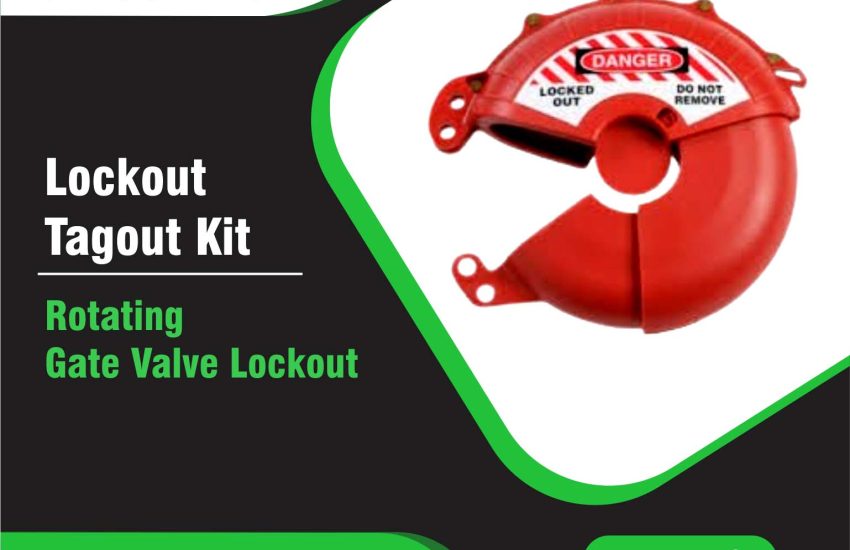Safety is a top priority in industrial settings, especially when handling high-pressure systems, hazardous materials, or heavy machinery. One key safety device that ensures worker protection is the Rotating Gate Valve Lockout. These lockout devices prevent accidental valve operation during maintenance and repair, securing rotating gate valves and reducing the risk of unauthorized operations. In this article, we will explore the specifications, features, and benefits of Rotating Gate Valve Lockouts while also providing relevant SEO-friendly keywords.
What Is a Rotating Gate Valve Lockout?
A Rotating Gate Valve Lockout is a safety device designed to lock the handle or actuator of a rotating gate valve. It prevents operation during maintenance or repair tasks. Rotating gate valves are used to control fluid or gas flow in various systems. By securing the valve, the lockout ensures it cannot be moved accidentally, boosting worker safety.
Why Use a Rotating Gate Valve Lockout?
A Rotating Gate Valve Lockout offers numerous advantages:
- Prevent Unauthorized Operation: The lockout prevents unauthorized personnel from operating the valve during critical maintenance procedures.
- Enhance Worker Safety: It secures the valve, reducing the risk of accidental hazardous material releases or high-pressure system accidents that could harm workers.
- Ensure Compliance: Lockout devices help businesses comply with OSHA lockout/tagout regulations, controlling hazardous energy during maintenance.
- Protect Equipment: By preventing valve operation, lockouts reduce the risk of equipment damage from improper valve handling.
Specifications of a Rotating Gate Valve Lockout
When choosing a Rotating Gate Valve Lockout, consider these essential specifications:
1. Material and Durability
- Durable Materials: Common materials like polycarbonate, ABS plastic, stainless steel, and aluminum are used for lockouts. These materials offer impact resistance, corrosion protection, and UV degradation resistance.
- Chemical Resistance: For industries like chemical processing or oil and gas, lockouts may be made of materials resistant to chemical corrosion and harsh environmental conditions.
2. Size and Compatibility
- Adjustable Size: A good lockout design should be adjustable to fit various valve sizes, ensuring versatility across different valve handles.
- Universal Fit: Many lockouts are universal, meaning they can accommodate multiple types of rotating gate valves, offering easy integration into existing systems.
3. Locking Mechanism
- Single and Multiple Lock Capability: Some lockouts support a single lock, while others allow multiple locks for enhanced safety, enabling several workers to lock the device simultaneously.
- Locking Pins and Holes: These lockouts feature locking pins that fit into holes on the valve handle or actuator to prevent movement, whether the valve is open or closed.
4. Ease of Use
- Tool-Free Installation: Lockouts are designed for easy installation and removal without the need for specialized tools.
- Bright Colors for Visibility: Typically colored red, yellow, or orange, these lockouts ensure visibility in industrial environments, improving safety awareness.
5. Safety Features
- Tamper-Proof Design: Some lockouts include tamper-resistant features, preventing bypassing and ensuring the valve stays locked.
- Weather Resistance: Outdoor applications require lockouts that can endure extreme weather conditions, including UV rays, humidity, and cold temperatures.
Types of Rotating Gate Valve Lockouts
Several types of Rotating Gate Valve Lockouts cater to specific valve configurations and industrial needs:
- Clamp-On Rotating Gate Valve Lockouts
- These lockouts clamp directly onto the valve handle or actuator, ensuring a secure hold. They are easy to install and remove, making them ideal for frequent maintenance.
- Lever-Type Rotating Gate Valve Lockouts
- Designed for valves with lever handles, these lockouts fit over the lever to prevent movement, keeping the valve securely in place.
- Universal Rotating Gate Valve Lockouts
- These versatile lockouts accommodate various valve types and sizes, thanks to their adjustable design. They are perfect for systems with different valve configurations.
- Ball Valve and Gate Valve Hybrid Lockouts
- These hybrid lockouts can secure both ball valves and gate valves, offering flexibility for systems using both valve types.
Key Benefits of Rotating Gate Valve Lockouts
- Increased Safety: Lockouts prevent accidental valve operation, significantly reducing injury and equipment damage risks.
- Improved Compliance: Lockout devices help businesses meet OSHA lockout/tagout requirements, protecting workers from exposure to hazardous energy.
- Reduced Equipment Downtime: By preventing improper valve operation, lockouts help preserve equipment integrity, reducing downtime and maintenance costs.
- Clear Communication: Many lockouts feature spaces for lockout tags, allowing workers to communicate the status of the lockout and identify responsible personnel.
Conclusion
Rotating Gate Valve Lockout is an essential safety device that helps ensure the proper operation of rotating gate valves in industrial environments. By preventing unauthorized or accidental valve operation during maintenance, these lockouts improve worker safety, reduce equipment damage, and ensure compliance with OSHA lockout/tagout regulations. When selecting a Rotating Gate Valve Lockout, consider factors such as material durability, size compatibility, locking mechanisms, and ease of use to meet your specific needs.
Implementing these lockout devices in your facility will create a safer work environment, minimize downtime, and maintain equipment integrity. Whether you need adjustable lockouts, multi-lock capabilities, or chemical-resistant designs, there is a Rotating Gate Valve Lockout solution available for every industrial application.


